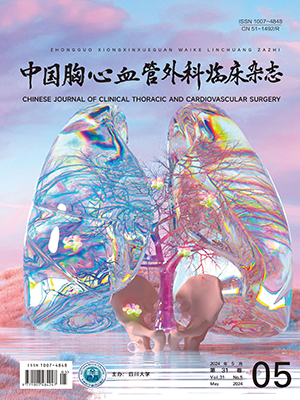Objective To improve the myocardial protection result, observe the effects of 11,12 epoxyeicosatrienoic acid (11,12 EET) on reperfusion arrhythmias in the isolated perfused immature rabbit hearts, which underwent long term preservation. Methods Sixteen isolated rabbit hearts were randomly assigned to two groups, 8 rabbits each group. Control group: treated with St.Thomas Ⅱ solution, experimental group: treated with St.Thomas Ⅱ solution plus 11,12 EET. By means of the Langendorff technique, these isolated rabbit hearts were arrested and stored for 16 hours with 4℃ hypothermia, and underwent 30 minutes of reperfusion(37℃). The mean times until the cessation of both electrical and mechanical activity were measured after infusion of cardioplegia. The heart rate (HR), coronary flow (CF), myocardial water content (MWC), value of creatine kinase (CK) and lactic dehydrogenase (LDH), myocardial calcium content and the arrhythmias score (AS) during the period and at the endpoint of the reperfusion were observed. Results The times until electrical and mechanical activity arrest in the experimental group were significantly shorter than those in control group ; HR, CF, MWC, CK, LDH, myocardial calcium content and AS were significantly better than those in control group. Conclusions These data suggest that 11,12 EET added to the cardioplegic solution of St.Thomas Ⅱ has lower incidence rate of reperfusion arrhythmias.
Citation: 周明阳,吴清玉,钟星,等. Effects of 11,12-epoxyeicosatrienoic acid on reperfusion arrhythmias in the immature rabbit hearts. Chinese Journal of Clinical Thoracic and Cardiovascular Surgery, 2004, 11(2): 124-126. doi: Copy




